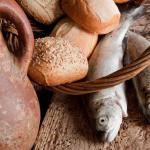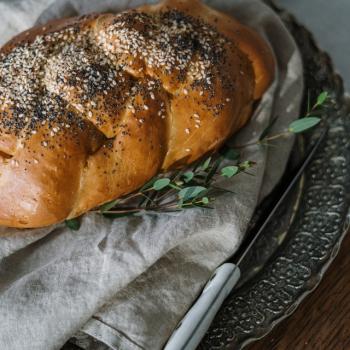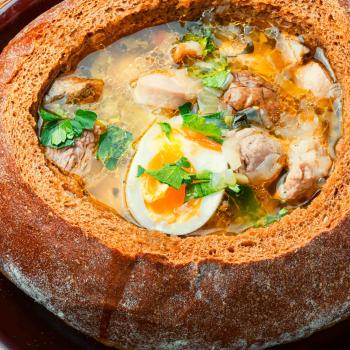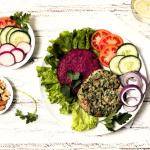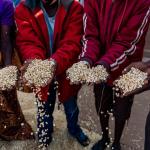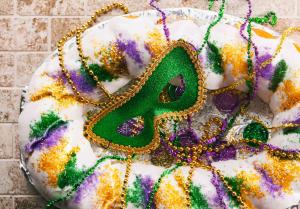 It’s a little over two weeks before Ash Wednesday, when Lent begins, as do the accompanying sacrifices (this will be covered in the future when we’ll discuss faith and no food). However, before that happens, there’s Mardi Gras/Fat Tuesday/Shrove Tuesday.
It’s a little over two weeks before Ash Wednesday, when Lent begins, as do the accompanying sacrifices (this will be covered in the future when we’ll discuss faith and no food). However, before that happens, there’s Mardi Gras/Fat Tuesday/Shrove Tuesday.
The holiday is celebrated in different ways around the world, and I’ll be focusing on the U.S. celebration as well as the food aspect. However, before we get into that, I’d like to talk about some of the traditional foods that are prepared for Fat Tuesday and give you some links. This should give you plenty of time to finalize your menu, shop for ingredients, and prepare for your celebration. There are dozens of possibilities, and they can’t all be covered. However, here are a handful of indulgences to try.
King Cake – The Mardi Gras dish that’s not just tasty, it could bring you good fortune. Tradition calls for a toy baby to be baked in the cake. It’s added to recognize Epiphany, the twelfth day after Christmas when the Three Kings arrived with gifts for baby Jesus. Luck and prosperity are in the future for the person who finds the baby in the cake. Don’t forget to decorate it with gold, purple, and green.
– The Mardi Gras dish that’s not just tasty, it could bring you good fortune. Tradition calls for a toy baby to be baked in the cake. It’s added to recognize Epiphany, the twelfth day after Christmas when the Three Kings arrived with gifts for baby Jesus. Luck and prosperity are in the future for the person who finds the baby in the cake. Don’t forget to decorate it with gold, purple, and green.
Beignets – Delicious pillows of deep-fried dough generously dusted with confectioners’ sugar and a must-have at Mardi Gras.
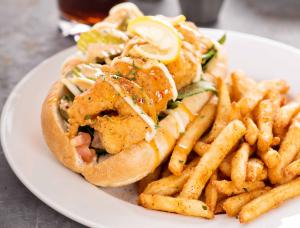
Shrimp Po’ Boy – While fried oyster and fried shrimp sandwiches have been around for centuries, the term po’ boy originated when Benny and Clovis martin opened an eatery in New Orleans in 1921. The New Orleans French bread didn’t make its debut for the sandwich until 1929, which is also when the term “poor boy” was used. That was also the year when the Martins served the sandwiches for free to striking streetcar workers. When a striker came into the eatery to get a sandwich, the Martins would remark (in good fun) that one of the “poor boys” was coming in to get a sandwich.
Crawfish Boil – This is one of the easier dishes to make, and it doesn’t even require a fancy setting. Many people just dump it on a paper-lined table and enjoy.
Shrimp and Grits – A popular and delicious southern breakfast dish that can be made with regular or cheesy grits.

Jambalaya – A one-pot dish like the crawfish boil, this is a dish that can be customized to different tastes and is amazing. I saved what I would say is the best for last.
Mardi Gras gets its origins from Boeuf Gras, which was celebrated in the 17th and 18th centuries in Rome, Venice, and France. The first time Mardi Gras was celebrated in the country was on March 3, 1699, but the first official time Mardi Gras was celebrated in what would become the United States was in 1703 in Fort Louis de la Mobile. It began to appear in New Orleans about 15 years after the city was established in 1718. However, it was much different than the celebration we see today. The holiday was a time for people to enjoy the rich, fatty foods in their homes, such as meats and cheeses, before the fish and fasting that is part of Lent. Today, it’s more of a celebration of indulgences before Lent (which has also changed) begins.
Beyond eating pancakes and other sweets, Shrove Tuesday is the day when Christians make final preparations for Lent, burning the palms from the previous year’s Holy Week and making final plans for Lent.
I’ll be covering Lent and food in a few days, but until then, get ready to indulge!
One final note. This is the first in a continuing series where I’ll offer recipes and links to recipes for foods that have to do with religious celebrations and holidays. The next column will be the first in which I discuss how giving up foods is as much a part of faith as the foods we do eat.


